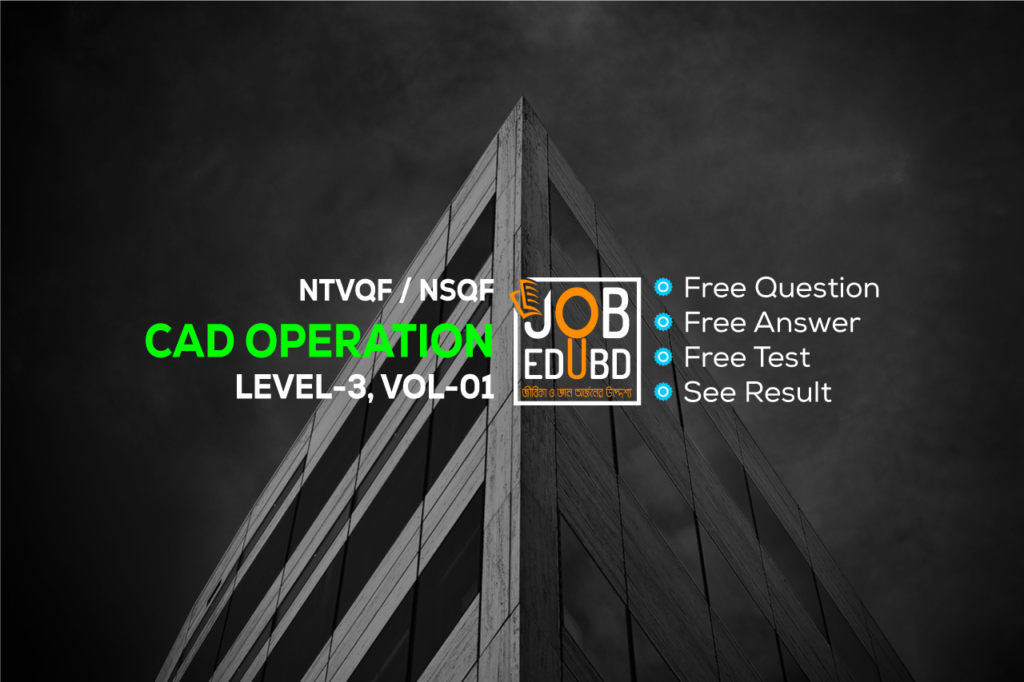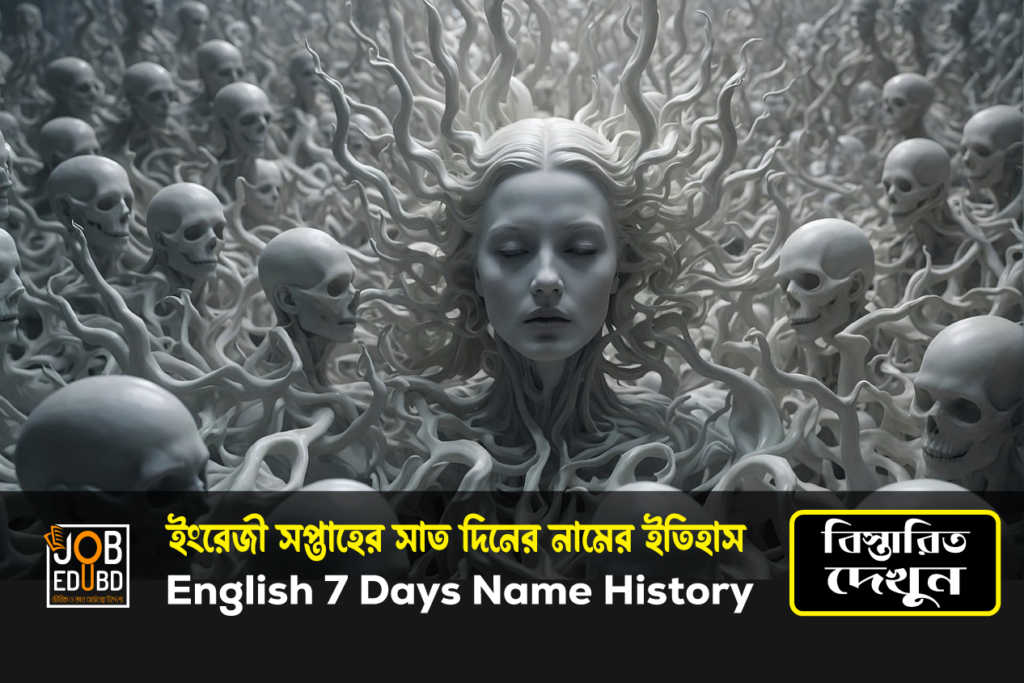Graphic Design Level-3 Suggestion V-4
Written Test Graphic Design Level-3 Suggestion V-4 by Job Edu BD
First, test yourself with the following MCQs, if you can’t do it, you can check the answer by clicking on the answer button.
Graphic Design level-3 Suggestion V-4
01. What is the actual size of a A4 size paper?
- 8″ x 1O”
- 8.267″ x 11.692″
- 9″ x 17″
- 9.5″ x 11″
02. Which one of the following is a Word processor?
- MS
- Google docs
- Firefox
03. Which one of the following is a computer Peripherals?
- Modem
- Software
- Hard disk
- USB port
04. Which one of the following is a working platform for freelancing?
- Guru
- Gorila.com
- Georgia
- None
05. Which one of the following is an online Channels of communication?
- Zoom
- Effective questioning
- Local authority
- Letter
06. Which one of the following is a courteous manner?
- Direct roughly
- Active listening
- Too much questioning
- Always Showing rules and regulations
07. Which one of the following is not a Workplace ace document?
- Directions
- Emails
- Regulations
- Workforce
08. Which one of the following is a method of communication?
- Email address
- Banner ads
- Letter head
- Search engine
09. Which file format is the most widely used when saving a rastered image for printing?
- TIFF
- JPG
- GIF
- PNG
10. C=O I M=100 I Y=100 I K=O, CMYK values, will produce what color??
- Blue
- Green
- Black
- Red
11. Pantone is?
- Hex color values
- Illustrator color values
- A proprietary color spaces
- Photoshop color value
12. In typography, kerning is stand for-?
- the distance between the baselines of successive lines of type
- the process of adjusting the spacing between two characters
- the process of selecting a typeface for a paragraph style
- the process of uniformly increasing or decreasing the space between all letters in a block of text
13. What is a typography serif??
- A detail on the end of a letter’s stroke
- A typeface that looks handwritten
- Letters that are formed from character pairs
- Letters that fall below the baseline
14. What does the printer use to know where to trim the paper after printing?
- Crop Marks
- A Ruler Color
- Bars
- Registration Marks
15. What color does the hexadecimal code #FFFFFF make?
- blue
- red
- White
- black
16. What is the uses of CONTRAST?
17. Mentioned 5 working platforms for freelancing.
18. What is the serif font?
19. What is the color theory?
20. which we should use to convert raster to vector?
21. What is a watermark?
22. What is the stand for “K” in CMYK?
23. What is freelancing in graphic design?
24. How do I start freelancing in graphic design?
25. What software should I learn for graphic design freelancing?
26. What is a vector graphic?
27. What is the difference between raster and vector graphics?
28. How do I price my graphic design services as a freelancer?
29. What is a mood board in graphic design?
30. What is a design brief?
01. What is the actual size of a A4 size paper?
B. 8.267″ x 11.692″
02. Which one of the following is a Word processor?
C. Google docs
03. Which one of the following is a computer Peripherals?
A. Modem
04. Which one of the following is a working platform for freelancing?
A. Guru
05. Which one of the following is an online Channels of communication?
A. Zoom
06. Which one of the following is a courteous manner?
B. Active listening
07. Which one of the following is not a Workplace ace document?
A. Directions
08. Which one of the following is a method of communication?
B. Banner ads
09. Which file format is the most widely used when saving a rastered image for printing?
A. TIFF
10. C=O I M=100 I Y=100 I K=O, CMYK values, will produce what color??
D. Red
11. Pantone is?
C. A proprietary color spaces
12. In typography, kerning is stand for-?
B. the process of adjusting the spacing between two characters
13. What is a typography serif??
A. A detail on the end of a letter’s stroke
14. What does the printer use to know where to trim the paper after printing?
A. Crop Marks
15. What color does the hexadecimal code #FFFFFF make?
C. White
16. What is the uses of CONTRAST?
Ans: The design principle of contrast refers to the use of visually different elements. In addition to capturing attention, contrast can guide the viewer’s eye to a focal point, highlight important information and add variety, or even drama, to a design.
17. Mentioned 5 working platforms for freelancing.
Ans: 1. Fiverr 2. Freelancer.com 3. Upwork 4. Flexjobs 5. Guru 6. Behance 7. 99designs 8. Dribbble 9. People Per Hour 10. DesignHill
18. What is the serif font?
Ans: Serif font (red serifs) In typography, a serif (/ˈsɛrɪf/) is a small line or stroke regularly attached to the end of a larger stroke in a letter or symbol within a particular font or family of fonts.
19. What is the color theory?
Ans: Color theory is the collection of rules and guidelines which designers use to communicate with users through appealing color schemes in visual interfaces.
20. which we should use to convert raster to vector?
Ans: Live Trace.
21. What is a watermark?
Ans. A watermark is a logo, text, or pattern that is intentionally superimposed onto another image. Its purpose is to make it more difficult for the original image to be copied or used without permission.
22. What is the stand for “K” in CMYK?
Ans: Black.
23. What is freelancing in graphic design?
Ans: Freelancing in graphic design involves working independently as a graphic designer on a project basis for various clients
24. How do I start freelancing in graphic design?
Ans: Create a strong portfolio showcasing your work, set competitive rates, and start marketing your services.
25. What software should I learn for graphic design freelancing?
A: Adobe Creative Suite software like Photoshop, Illustrator, and InDesign are commonly used in graphic design.
26. What is a vector graphic?
A: Vector graphics are made of paths and can be scaled infinitely without losing quality.
27. What is the difference between raster and vector graphics?
A: Raster graphics use pixels and can lose quality when scaled, while vector graphics are based on paths and maintain quality when scaled.
28. How do I price my graphic design services as a freelancer?
A: Consider your experience, the complexity of the project, and market rates to determine your pricing.
29. What is a mood board in graphic design?
A: A mood board is a visual collage of images, colors, and textures used to convey a design concept.
30. What is a design brief?
A: A design brief is a document that outlines a client’s project requirements, goals, and expectations.

MD. SALAHUDDIN
CSE, BUBT
In-Charge (Graphic Design)
Instructor
Bangladesh-German Technical Training Center
Mirpur-2, Dhaka-1216
Graphic Design Level-3 Suggestion V-3
"You will pass just by asking the mentioned questions, it's not like that at all, but chances are upto 80% to get common. This is just a suggestion. This question is not copied from any board question"
Related Post
Graphic design is a profession,[2] academic discipline[3][4][5] and applied art whose activity consists in projecting visual communications intended to transmit specific messages to social groups, with specific objectives.[6] Graphic design is an interdisciplinary branch of design[1] and of the fine arts. Its practice involves creativity, innovation and lateral thinking using manual or digital tools, where it is usual to use text and graphics to communicate visually.
The role of the graphic designer in the communication process is that of the encoder or interpreter of the message. They work on the interpretation, ordering, and presentation of visual messages. Usually, graphic design uses the aesthetics of typography and the compositional arrangement of the text, ornamentation, and imagery to convey ideas, feelings, and attitudes beyond what language alone expresses. The design work can be based on a customer’s demand, a demand that ends up being established linguistically, either orally or in writing, that is, that graphic design transforms a linguistic message into a graphic manifestation.[7]
Graphic design has, as a field of application, different areas of knowledge focused on any visual communication system. For example, it can be applied in advertising strategies, or it can also be applied in the aviation world[8] or space exploration.[9][10] In this sense, in some countries graphic design is related as only associated with the production of sketches and drawings, this is incorrect, since visual communication is a small part of a huge range of types and classes where it can be applied.
COPY
Graphic design has, as a field of application, different areas of knowledge focused on any visual communication system. For example, it can be applied in advertising strategies, or it can also be applied in the aviation world[8] or space exploration.[9][10] In this sense, in some countries graphic design is related as only associated with the production of sketches and drawings, this is incorrect, since visual communication is a small part of a huge range of types and classes where it can be applied.
With origins in Antiquity and the Middle Ages,[11] graphic design as applied art was initially linked to the boom of the rise of printing in Europe in the 15th century and the growth of consumer culture in the Industrial Revolution. From there it emerged as a distinct profession in the West, closely associated with advertising in the 19th century[12] and its evolution allowed its consolidation in the 20th century. Given the rapid and massive growth in information exchange today, the demand for experienced designers is greater than ever, particularly because of the development of new technologies and the need to pay attention to human factors beyond the competence of the engineers who develop them.[13]
History: In both its lengthy history and in the relatively recent explosion of visual communication in the 20th and 21st centuries, the distinction between advertising, art, graphic design and fine art has disappeared. They share many elements, theories, principles, practices, languages and sometimes the same benefactor or client. In advertising, the ultimate objective is the sale of goods and services. In graphic design, “the essence is to give order to information, form to ideas, expression, and feeling to artifacts that document the human experience.”[17]
The definition of the graphic designer profession is relatively recent concerning its preparation, activity, and objectives. Although there is no consensus on an exact date when graphic design emerged, some date it back to the Interwar period. Others understand that it began to be identified as such by the late 19th century.[11]
It can be argued that graphic communications with specific purposes have their origins in Paleolithic cave paintings and the birth of written language in the third millennium BCE. However, the differences in working methods, auxiliary sciences, and required training are such that it is not possible to clearly identify the current graphic designer with prehistoric man, the 15th-century xylographer, or the lithographer of 1890.
The diversity of opinions stems from some considering any graphic manifestation as a product of graphic design, while others only recognize those that arise as a result of the application of an industrial production model—visual manifestations that have been “projected” to address various needs: productive, symbolic, ergonomic, contextual, among others.
Nevertheless, the evolution of graphic design as a practice and profession has been closely linked to technological innovations, social needs, and the visual imagination of professionals.[18] Graphic design has been practiced in various forms throughout history; in fact, good examples of graphic design date back to manuscripts from ancient China, Egypt, and Greece. As printing and book production developed in the 15th century, advances in graphic design continued over the subsequent centuries, with composers or typographers often designing pages according to established type.[11]
By the late 19th century, graphic design emerged as a distinct profession in the West, partly due to the process of labor specialization that occurred there and partly due to the new technologies and business possibilities brought about by the Industrial Revolution. New production methods led to the separation of the design of a communication medium (such as a poster) from its actual production. Increasingly, throughout the 19th and early 20th centuries, advertising agencies, book publishers, and magazines hired art directors who organized all visual elements of communication and integrated them into a harmonious whole, creating an expression appropriate to the content. In 1922, typographer William A. Dwiggins coined the term graphic design to identify the emerging field.[11]
Throughout the 20th century, the technology available to designers continued to advance rapidly, as did the artistic and commercial possibilities of design. The profession expanded greatly, and graphic designers created, among other things, magazine pages, book covers, posters, CD covers, postage stamps, packaging, brands, signs, advertisements, kinetic titles for TV programs and movies, and websites. By the early 21st century, graphic design had become a global profession as advanced technology and industry spread worldwide.[11]
Graphic design can have many applications, from road signs to technical schematics and reference manuals. It is often used in branding products and elements of company identity such as logos, colors, packaging, labelling and text.
From scientific journals to news reporting, the presentation of opinions and facts is often improved with graphics and thoughtful compositions of visual information – known as information design. With the advent of the web, information designers with experience in interactive tools are increasingly used to illustrate the background to news stories. Information design can include Data and information visualization, which involves using programs to interpret and form data into a visually compelling presentation, and can be tied in with information graphics.
Skill: A graphic design project may involve the creative presentation of existing text, ornament, and images.
The “process school” is concerned with communication; it highlights the channels and media through which messages are transmitted and by which senders and receivers encode and decode these messages. The semiotic school treats a message as a construction of signs which through interaction with receivers, produces meaning; communication as an agent.[citation needed]
Typography
Typography includes type design, modifying type glyphs and arranging type. Type glyphs (characters) are created and modified using illustration techniques. Type arrangement is the selection of typefaces, point size, tracking (the space between all characters used), kerning (the space between two specific characters) and leading (line spacing).
Typography is performed by typesetters, compositors, typographers, graphic artists, art directors, and clerical workers. Until the digital age, typography was a specialized occupation. Certain fonts communicate or resemble stereotypical notions. For example, the 1942 Report is a font which types text akin to a typewriter or a vintage report.[36]
From Wikipedia, the free encyclopedia
Post review
Finding Your Post
Graphic Design Level-3 Suggestion V-4 NSQF / NTVQF CAD Operation Level-3 Suggestion V-4, NSQF NTVQF, CAD Operation Level-3 Suggestion V-4, Job Edu BD, NSQF NTVQF NSDA BTEB Suggestion Vol-1
Graphic Design Level-3 Suggestion V-4 NSQF / NTVQF CAD Operation Level-3 Suggestion V-4, NSQF NTVQF, CAD Operation Level-3 Suggestion V-4, Job Edu BD, NSQF NTVQF NSDA BTEB Suggestion Vol-1 NSQF NTVQF NADA BTEB Graphic Design Level-3 Suggestion V-4
Graphic Design Level-3 Suggestion V-4 NSQF / NTVQF CAD Operation Level-3 Suggestion V-4, NSQF NTVQF, CAD Operation Level-3 Suggestion V-4, Job Edu BD, NSQF NTVQF NSDA BTEB Suggestion Vol-1 NSQF NTVQF NADA BTEB Graphic Design Level-3 Suggestion V-4







